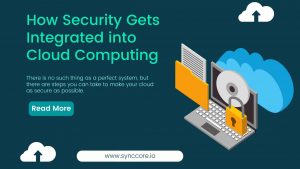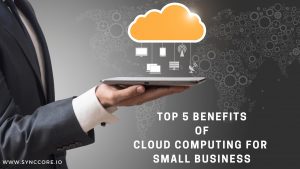Whether you run your workloads within the public cloud, a personal cloud, a hybrid infrastructure, or a multi-cloud with many cloud suppliers, you would like to go with information laws and secure information security.
Non-compliance with informational data rules and a later breach will cause financial losses and harm to complete authority. To achieve data protection in the cloud, you’ll implement numerous techniques, like cipher message, access management, endpoint security, and analysis.
Table of Contents
What is Data Protection in Cloud
Cloud information protection can be defined as a set of activities aimed at securing data in a cloud environment. These guidelines apply to data stored and maintained by third parties, whether internally or externally. As businesses raised the amount of data stored in the cloud, cloud information security policies became increasingly important.
Why do corporations want Cloud Information Protection?
Many businesses acquire and retain large volumes of data, as well as sensitive information. The majority of this data comes into contact with the cloud at some point, whether during collection or storage
Organizations have gradually operated via internet portals or had software application as a service (SaaS) offerings, which contributes to the growth of cloud-based knowledge storage. Each of these requirements necessitates cloud access. Moreover, numerous businesses have been chosen to keep data in the cloud, including for internal purposes.
Problems with Data Protection in Cloud:
When it comes to implementing information security in the cloud, your company is likely to run across a number of issues.
Integrity:
Systems should be built to ensure that only licensed users have access. Permission to change or delete information should also be limited to acceptable people, according to configurations.
Locality:
Data rules are implemented based on its physical geography for information, wherever it is collected and utilized. In a distributed system, this could be difficult to figure out and manage. Systems should be created using a method that clearly describes where knowledge may be found in any situation.
Confidentiality:
Data must always be secured in accordance with its level of secrecy. To evaluate the readability, permissions must be adequately limited and encryption must be used. Similarly, admin credentials and cipher keys should be kept safe while verifying that these constraints have been followed.
Storage:
The cloud infrastructure is completely in the hands of the service providers. This means that businesses should rely on service providers to verify the security of their physical infrastructures, network, and data centers.
Best Approach with Data Protection in Cloud:
Consider the following best practices to guarantee that the protections you create are effective.
Evaluate intrinsic security:
Any cloud service you choose should have strong internal controls in place and provide reliable tools to aid you in data security. Look for companies that offer service level agreements to ensure that your systems are sufficiently safeguarded. Check to see what policies the supplier has in place to meet compliance requirements. You won’t be able to meet compliance criteria if the suppliers don’t appear to be certified.
Utilize file-level encoding:
Most cloud providers guarantee a certain amount of the in and at-rest encoding life. Each of those should be changed. You should also consider adding additional file-level encoding. The best way to do this is to encrypt data and then send that to cloud storage.
If you’re having trouble publishing just at the file level, consider “sharding” your data. Sharding is a method of storing data or programs in multiple locations. Even if attackers obtain access to your data, it will make it increasingly challenging for them to piece everything together.
Restrict access with robust credentials:
Strong document policies and tight access restrictions should be implemented. Strict permissions ensure that users and programs have sole access to their information. Strong document controls ensure that attackers aren’t likely to abuse the permissions given to those users and programs.
Audit your permissions on a regular basis & establish parole life cycles. You want to make sure that every single credential within the systems area unit is in use. Additionally, you may need to ensure the passwords are sufficiently difficult to deduce which users aren’t reusing passwords.
Secure end-user gadgets:
Endpoints are one of the most vulnerable components of your system, particularly if they are user-controlled. As an example, as a part of the bring your own device (BYOD) policy, smartphones are linked to your networks. Because security groups don’t have complete control over security measures like upgrades or encoding, these gadgets could be a liability.
You should use associate terminal protection resolution to keep these devices from failing. These tools aid you in monitoring and restricting traffic around your network perimeter, as well as preventing data from leaving or accessing your systems.
Data security in the cloud is tough, especially when dealing with distributed and complex infrastructure such as multi-cloud & hybrid clouds. If you’re a victim of more than a cloud merchant or numerous cloud services, you’ll need to work harder to keep your information safe. When you relocate data on-premises, data protection has become a lot easier. SyncCore Cloud is an on-premise storage solution that is simple to set up and operate, allowing you to store and access Petabyte-scale data at a cheap cost.
SyncCore is a well-known cloud data protection, cloud backup, and cloud service provider company. If you require cloud services, kindly contact us at [email protected] or Call +91 8779526680. for more information please visit our website www.synccore.io
Read More: Areas That Are Propelling Cloud Adaptation



